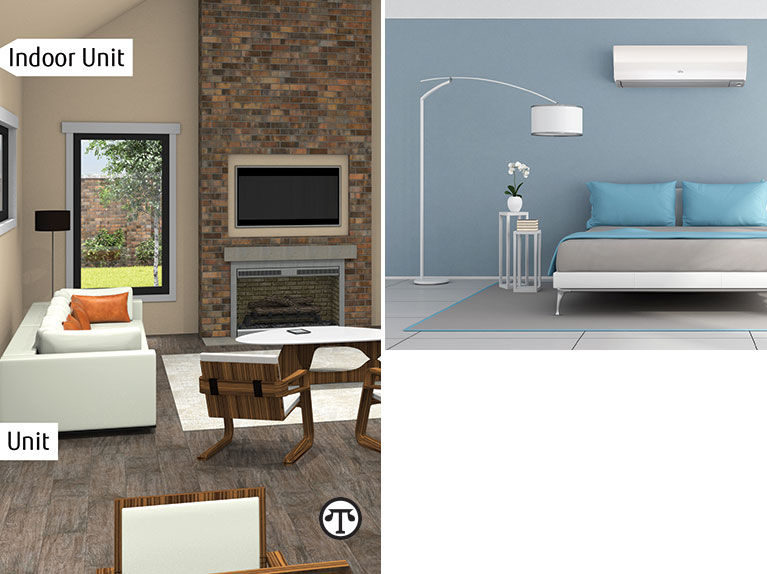
(NAPSI)—When temperatures rise, many people automatically crank up the air conditioners to stay cool. However, it may surprise them to learn that air conditioners use about 5 percent of all electricity produced in the U.S., costing homeowners more than $11 billion a year in energy expenses.
The good news is that by following some practical tips at home, you can stay cool, save money and even help the environment. Here are a few energy-saving ideas to consider:
Energy-Efficient Heating and Cooling: Upgrading your system can have a big effect on your utility bills—and your comfort—year-round. In fact, the most energy-efficient heating and cooling products on the market—ductless mini-split systems—can save you as much as 30 percent on your utility bills.
How does a ductless mini-split system work? Thin copper tubing is used to pump refrigerant from an outdoor compressor directly into an indoor air-handling unit, where the air is quietly distributed to the interior space. This eliminates the need for basement or attic evaporators and bulky, expensive ductwork. Mini-splits are easy to install and usually require only a 3- to 4-inch hole through a wall or ceiling to connect the indoor and outdoor units.
Ductless mini-split systems also let you control the individual temperature in each room. This means you don’t have to waste money cooling or heating spaces that you’re not using—such as guest bedrooms, bonus rooms, sunrooms and basements. Ductless systems operate at efficiency levels far above central forced-air systems and window units, as duct losses in a central AC system can account for more than 30 percent of your energy consumption. Fujitsu General, a leading mini-split manufacturer, offers the most energy- efficient lineup on the market, including wall- and floor-mounted, slim duct and compact cassette indoor units.
Rebates and Tax Incentives: To encourage homeowners to buy energy-efficient products and reduce greenhouse gases, many utility companies offer rebates on qualified products. To estimate how much money you could save on a ductless mini-split system, you can visit the efficiency calculator on constantcomfort.com. The federal stimulus package also offers significant tax credits to homeowners who invest in new insulation and energy-efficient windows and heating/cooling systems.
Quick Fixes: Small changes can have a big effect on your utility bill as well. Try to use heat-producing appliances—stoves, irons and dryers—at night or early morning. Switch to LED lightbulbs instead of incandescent bulbs—which consume 90 percent more power. Seal air leaksÊaround windows, doors, and places where pipes and wires come through walls. Check existing caulking and weather stripping for gaps or cracks.
Window Treatments: These can work to your advantage, too.ÊClose all windows and coverings to keep your house cool. Dark-colored curtains, Roman shades, even discount store roller shades can be very effective. Solar screens, or meshlike window screens, intercept up to 70 percent of solar energy before it gets into the house, and installing awnings can reduce solar heat gain by as much as 77 percent, according to the U.S. Department of Energy.
When it comes to beating the heat, there is no need to suffer high utility bills. There are many actions you can take to reduce your energy expenses. You can change some everyday habits or invest in a new energy-efficient heating and cooling system. Many Fujitsu systems with the Energy Star rating are more than twice as efficient as the minimum standard set by the government.
To learn more or find a contractor nearby, call (888) 888-3424 or visit www.constantcomfort.com.
On the Net:North American Precis Syndicate, Inc.(NAPSI)






